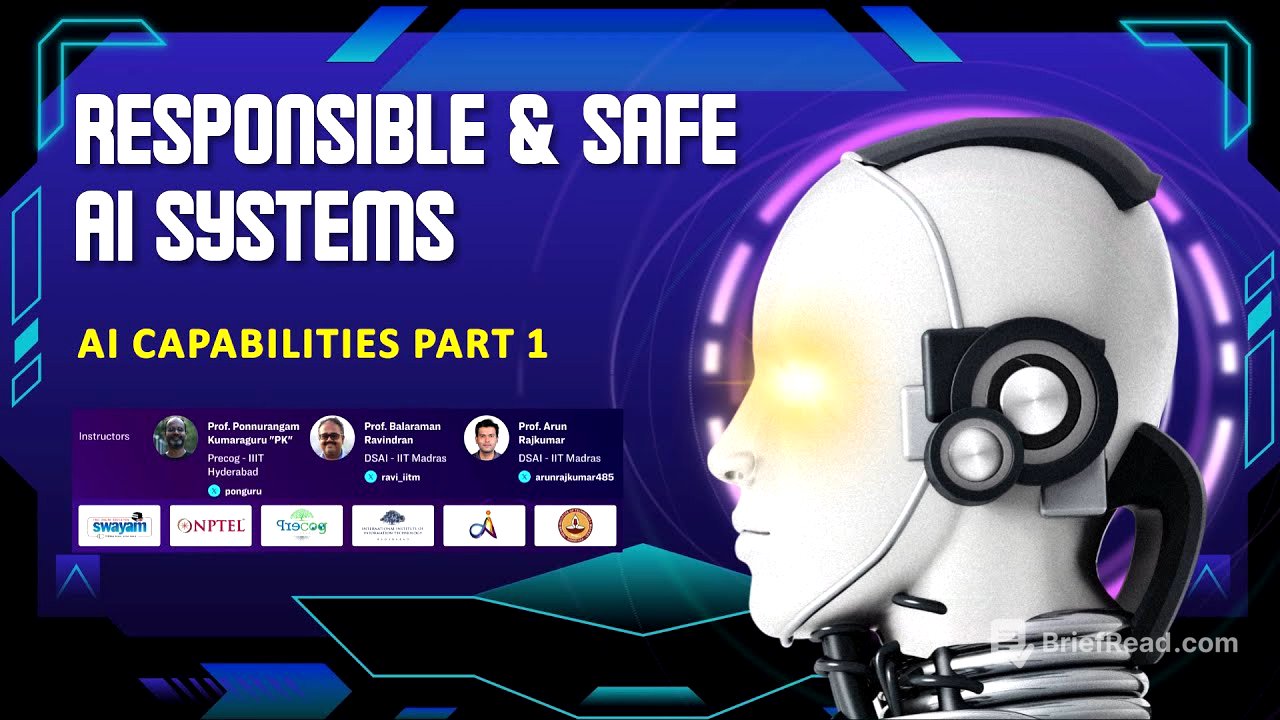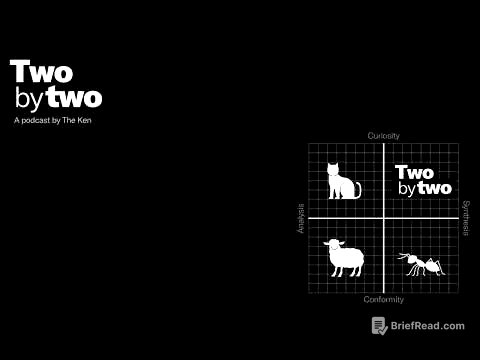TLDR;
Alright, so this video gives you a dekko at how AI capabilities have evolved, focusing on vision, language, and reinforcement learning. It touches upon how AI is now all pervasive, from image and video generation to gaming and text creation, and also discusses the ethical considerations that come with it.
- AI capabilities have changed the way we live and interact.
- It's becoming harder to differentiate between AI and humans.
- Advancements in algorithms, data, and computing power have driven AI's progress.
Introduction to AI Capabilities [0:02]
The speaker welcomes everyone back to the course and encourages participation through the mailing list, discussions, and bringing external topics to the class. The session will explore AI capabilities and their impact on daily life, relating them to associated risks. The speaker mentions the widespread use of tools like Chat GPT across various fields, from education to research. The discussion aims to understand the current state of AI, how it has evolved, and the increasing difficulty in distinguishing between AI and human outputs, referencing the Turing test.
Factors Contributing to AI Advancements [4:07]
The speaker highlights the scaling up of algorithms and training data, along with increased computing capabilities, as key factors driving AI advancements. While computing is becoming cheaper, it also presents challenges related to power consumption and cooling. The speaker illustrates AI's capabilities by mentioning its ability to process complex requests, such as drafting internship application emails, quickly and efficiently. He notes that the rapid pace of AI advancements has surprised many, with significant progress occurring in recent years, particularly since 2010-2014.
Ethical Considerations and AI Capabilities [7:02]
The speaker brings up the ethical considerations surrounding AI, such as the potential for AI to replace human decision-making and jobs. He emphasizes the importance of understanding, appreciating, and discussing these concerns to develop solutions for responsible AI advancement. The speaker shares a Google search on AI capabilities, highlighting news articles about government engagement with AI, opportunities in AI, and upcoming AI-powered technologies. He encourages viewers to conduct their own searches to explore the evolving landscape of AI capabilities.
Categorizing AI Capabilities [9:30]
The speaker categorizes AI capabilities into vision, reinforcement learning, language, and multi-paradigm approaches. He plans to provide examples and discuss advancements in each category, comparing past and present capabilities. The goal is to showcase the evolution of AI over time, focusing on capabilities rather than the intricacies of specific algorithms. Examples include improvements in number and face recognition, demonstrating the progress in AI's ability to understand and generate images.
Evolution of Image Generation [11:21]
The speaker showcases the evolution of image generation from 2014 to 2020, highlighting the significant improvement in image quality. He presents examples of AI-generated images based on prompts, such as a Pomeranian on a throne and a kangaroo in Sydney, noting the advancements in algorithms, compute power, and training data. The speaker points out that newer images are more natural and accurate compared to earlier versions.
Image Generation Examples and Personal Experience [14:50]
The speaker shares examples of AI-generated images, including a prompt for "United States made out of sushi," to illustrate the progress in image quality and detail. He also shares his personal experience using AI to generate images for his course, noting the system's ability to understand complex prompts but also pointing out potential biases in the generated images, such as gender stereotypes. The speaker connects this to previous discussions on bias and stereotypes in AI.
Advancements in Image and Video Quality [18:37]
The speaker continues to illustrate the advancements in image generation quality by comparing images from 2019 and 2021. He also mentions the latest video generation platforms like Sora, encouraging viewers to explore the phenomenal quality of their outputs. The discussion extends to video games, showcasing the evolution from simple games like Pong to more complex and visually appealing games like Starcraft and DOTA.
AI in Games and Strategy [21:02]
The speaker discusses the evolution of video games, highlighting the shift from simple games to complex multiplayer online games. He mentions AlphaGo, a DeepMind creation that defeated a Go expert, showcasing AI's ability to master complex strategy games. The speaker also touches upon AI's role in strategy games like Diplomacy, where AI can assist in playing and decision-making.
AI in Text Generation [26:07]
The speaker transitions to text generation, emphasizing its accessibility and impact, largely due to tools like Chat GPT. He categorizes language-based AI tasks into text completion, common sense question answering, and planning/strategic thinking. The speaker then presents examples of text generation models from 2011, 2019, 2020, and beyond, highlighting the improvements in language construction, coherence, and overall quality over time.
Evolution of Text Generation Models [27:52]
The speaker continues to illustrate the evolution of text generation models, showcasing examples from different years. He notes the significant improvements in coherence and relevance, particularly with the emergence of models like Chat GPT. The speaker also mentions Google's PaLM model and emphasizes the ongoing efforts by various companies to develop better language models.
Applications of Text Generation and Question Answering [32:21]
The speaker discusses the applications of text generation, including question answering systems. He provides examples of how these models can explain jokes and answer questions, showcasing their ability to understand context and provide relevant responses. The speaker also shares his personal experience using language models for tasks like adding emojis to text, highlighting their versatility and usefulness in various contexts.









